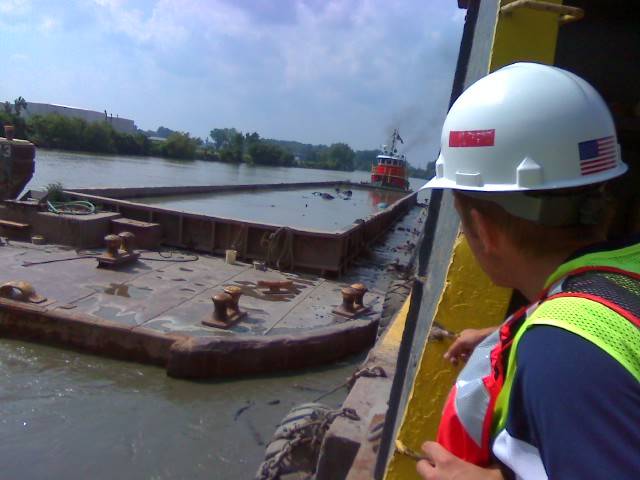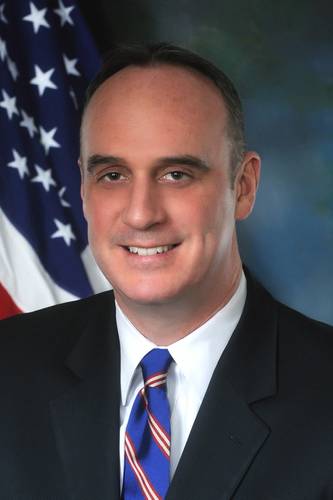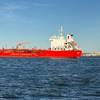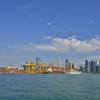U.S. Army Corps Selects 10 Beneficial Use Pilot Projects
At the end of December, the U.S. Army Corps of Engineers (ACE) announced its selection of ten dredging projects that will form the core of a pilot program to advance the beneficial use of dredged material.
The recent U.S. Army Corps of Engineers’ announcement culminated a program required by Congress, established within the Water Resources Development Act (WRDA) of 2016, specifically Section 1122. Congress directed that the ten pilot projects selected were required to present environmental, economic, and social benefits and the selections had to show “geographical diversity,” i.e., undertaken in different locations around the country. The Army Corps received 95 proposals.
The term, ‘dredge spoils,’ for most dredgers, is a dirty word. And, thankfully, it is slowly becoming a catch phrase from the past. According to William P. Doyle, the CEO & Executive Director of the Dredging Contractors of America (DCA), it’s all good news. Doyle says, “Those projects are designed to use material dredged from one site and then utilize it for coastal restoration rather than wasting it through ocean dumping or some other type of disposal. It’s good policy; now more widely accepted in the environmental community. Therefore, we’ll push for more of this in the coming years.”
Section 1122 also included a list of review criteria. Drilling down a little deeper, Congress wanted projects that would advance the following benefits:
- Reducing storm damage to property and infrastructure;
- Promoting public safety;
- Protecting, restoring, and creating aquatic ecosystem habitats;
- Stabilizing stream systems and enhancing shorelines;
- Promoting recreation;
- Supporting risk management adaptation strategies; and,
- Reducing the costs of dredging and dredged material placement or disposal, such as projects that use dredged material for—
Construction or fill material;
Civic improvement objectives; and
Other innovative uses and placement alternatives that produce public economic or environmental benefits.
A brief, closer look at each winning project, summarized from the USACE Environmental Assessment (EA), follows. That EA was not generally circulated, but was made available upon request. Importantly, the EA provides insight as to why the Army Corps judged that these 10 projects best demonstrate alignment with Congressional priorities.
Ten Proposals for Recommendation in alphabetical order by State … at a glance
STATE | MSC | PROJECT |
CA | SPD | Restoring San Francisco Bay's Natural Infrastructure w/Dredged Sediment: Strategic Placement |
HI | POD | Haleiwa Small Boat Harbor Maintenance Dredging and Beach Restoration |
IL | LRD | Public Beach Protection Pilot in Four Illinois Coastal Communities |
MS | SAD | Deer Island Lagoon Project |
NJ | NAD | Beneficial Use Placement Opportunities in NJ Using Navigation Channel Sediments: Barnegat Inlet |
PR (*) | SAD | Condado Lagoon |
SC | SAD | Crab Bank Seabird Sanctuary |
TX | SWD | Hickory Cove Marsh Restoration and Living Shoreline |
WA | NWD | Grays Harbor South Jetty Sand Placement Pilot Project |
WI | MVD | Mississippi River Upper Pool 4: Beneficial Use of Dredged Material |
(*) PR = Puerto Rico. MSC: “Major Subordinate Command,” pertains to a State’s particular regional Division (e.g. POD, SAD, etc.) / Project costs will be developed by the Districts. Contractors are not known at this time.
It is also important to note that final costs and budgets are not within USACE’s EA report. The projects are, however, subject to Sec. 204 cost-sharing requirements and there are limits on federal payments for transporting dredged material. These projects are not yet ‘shovel ready.’ Each will undergo closer analysis within USACE’s specific regional offices.
1. Restoring San Francisco Bay's Natural Infrastructure with Dredged Sediment: Strategic Placement
Location: San Francisco, CA
Summary: Pilot implementation of innovative strategic placement technique by placing dredged sediment from a federal navigation project adjacent to a tidal wetland using tides and currents to transport sediments to the marsh plain.
Highpoints:
“Strategic placement technique” is the critical concept. Note that final placement depends on tides and currents to augment mudflats, marshes, and breached salt ponds.
Reduces offshore disposal.
Stabilizes the shoreline.
Rebuild becomes a “first line of defense” in dampening tidal forces.
2. Haleiwa Small Boat Harbor Maintenance Dredging and Beach Restoration
Location: Island of Oahu, HI
Summary: Federal navigation sediments will stabilize the seawall, enhance the eroding shoreline and prevent exposure of a sewage treatment facility.
Highpoints:
The first-time that federal navigation sediments will be used in such a project.
Helps meet the need for sand resources, which are scarce in Hawaii.
Seawall stabilization.
Erosion prevention, particularly important in this locale for coral and marine life.
Habitat benefits for benthic and endangered sea turtles and Monk seals.
Expands recreational access.
3. Public Beach Protection Pilot in Four Illinois Coastal Communities
Location: Lake Michigan, IL
Summary: This project fosters collaboration among several communities (including a disadvantaged community) to place about 70,000 cubic yards of dredged material from the Waukegan Harbor federal channels at six sites in order to protect 30 miles of shoreline and provide improved recreation access.
Highpoints:
Local government teamwork.
Avoids trucking in quarried sand.
Protects sand dunes & builds habitat for endangered species, including the red knot & piping plover.
4. Deer Island Lagoon Project
Location: Biloxi, MS
Summary: This innovative adaptive management solution would incrementally fill Deer Island Lagoon to create 100 acres of tidal marsh using fine-grained dredged material from the adjacent Biloxi Harbor federal navigation project.
Highpoints:
The project’s gradual approach is highlighted because it allows for natural consolidation and prevents the need to construct large containment structures.
Extensive plant and wildlife benefits for the slash pine maritime forest, relic dune scrub, migratory bird, great blue heron rookery, and a number of endangered species habitats in addition to nesting sea turtles, ospreys and bald eagles.
Possible coastal storm risk management, life safety, and community benefits with increased recreational opportunities.
Leverages CAP 204 inter-related project funding.
5. Beneficial Use Placement Opportunities in New Jersey Using Navigation Channel Sediments
Location: Barnegat Inlet, NJ
Summary: Dredged material from Federal and State navigation channels would be placed on portions of the Barnegat Inlet to Little Egg Inlet Shore Protection Project, a project where offshore sand sources are used and are becoming increasingly scarce.
Highpoints:
Benefits to navigation and safety. One focus is to restore “hydrodynamic processes.”
Leverages federal and state partnerships.
Environmental/wildlife benefits extend to numerous endangered species, from horseshoe crabs to birds and decreasing coastal storm impacts.
6. Condado Lagoon – restoring a degraded aquatic ecosystem
Location: Northern Coast of Puerto Rico
Summary: This project will restore the degraded aquatic ecosystem in Condado Lagoon by using dredged material from the San Juan Harbor navigation project to reestablish historic lagoon elevations leading to restoration of ecosystem functions.
Highpoints:
Expanding sea grass communities will provide nursery habitats in the Lagoon, benefiting species with commercial and recreational fishery value.
Benefits for green sea turtles and the West Indian manatee.
Possible new economic opportunities from expanded tourist related activities including scuba diving, snorkeling and sailing.
7. Crab Bank Seabird Sanctuary
Location: Charleston Harbor, SC
Summary: Dredged material from the Charleston Harbor Post-45 Deepening Project would be placed at Crab Bank to restore and enhance 80 acres of island at an important seabird sanctuary to support shore bird habitat.
Highpoints:
USACE emphasizes that “this project has received approval to use higher fines content dredged material through extensive coordination with natural resource agencies.”
Non-uniform placement builds topographic variation and habitat diversity.
Rebuilding will protect the salt marsh by dissipating wave energy.
Development of numerous recreational and educational opportunities.
8. Hickory Cove Marsh Restoration and Living Shoreline
Location: Sabine, TX
Summary: Dredged material from a portion of the Sabine-Neches Waterway will be placed to restore 1200 acres of emergent marsh habitat important to wintering migratory waterfowl and resident water birds along a 6 mile reach of the Sabine Neches Waterway at the intersection of the Neches and Sabine Rivers.
Highpoints:
Provides an opportunity to remove sedimentation from Hurricane Harvey, maintenance not currently performed due to a lack of placement sites.
Possible storm risk management for petrochemical facilities and local communities.
The chance to build on established local partnerships.
9. Grays Harbor South Jetty Sand Placement Pilot Project
Location: Seattle, WA
Summary: Dredged material from the Grays Harbor Federal Navigation Channel will be placed using pump ashore capability from hopper dredge to restore the eroded beach and primary dune along the shoreline south of Grays Harbor and will assist in protecting the south jetty.
Highpoints:
Restore habitat for endangered snowy plover, razor clam, Dungeness Crab, and forage fish.
Improve coastal storm risk management a large portion of (about 25%) of municipal property.
Take advantage of collaborative local government planning.
10. Mississippi River Upper Pool 4, Pierce County Islands and Head of Lake Pepin Backwater Complex
Location: Upper Mississippi River, Wisconsin
Summary: Dredged material from Lower Pool 4 will be placed to create aquatic ecosystem habitat in Upper Pool 4, an area largely degraded due to sediment deposition caused by material from the Minnesota River. Also includes dredging of Bay City Federal harbor adjacent to the project area.
Highpoints:
The unique riverine focus provides an opportunity to restore bathymetric (river floor) diversity in an area impacted by Army Corps locks and dams.
Will provide 1,000 acres of habitat for waterfowl and migratory birds.
Improves small boat harbor navigation and safety. Bay City Harbor is currently not dredged due to a lack of a placement site.
Leverages CAP 204 funds and non-Federal partnerships.
As noted, ACE received a total of 95 pilot project applications from 30 states, from Alaska to Ohio to Connecticut, and Puerto Rico; surely reflecting “geographical diversity” and, without a doubt, clearly demonstrating interest and need regarding dredging and project solutions.
Sec. 1122 also set the project review process, requiring that ACE establish regional teams to undertake the initial, first-pass review of applications. The regional teams included Army Corps staff as well as individuals from other relevant federal, state and local agencies. There were eight such regional teams. Their work was completed in April 2018 and each team’s review materials were then sent to a Headquarters evaluation board.
The Top Ten: careful choices
At HQ, reviewers did not attempt to establish a 1 to 95 project ranking. Rather, they developed a two-step process, referred to as the “first sort and second sort.” The first sort, generally, sought to assess how well a particular project met the purposes and considerations set in Sec. 1122.
The second sort was more detailed, including a broad review of a range of environmental benefits – from ecosystem restoration to endangered species to concerns about radioactive and toxic materials. Outcomes were assigned a “High-Medium-Low” impact rating. Next, an analysis of economic and social benefits went through a similar filter. Reviewers tried to assess national and regional economic impacts, e.g., from reduced costs of flood damages to improved recreational opportunities. Projects were qualitatively ranked as “Positive-Neutral-Negative.”
The top 10 projects emerged from the second sort. Each demonstrated a high likelihood of delivering on environmental, economic, and social benefits. “Geographic diversity” provides valuable R&D opportunities across a variety of national waterways, soils, navigation and related ecosystems – and every single project will yield important opportunities to learn about matching mucky waste with reclamation and rebuilding.
At long last, the term ‘dredge spoils’ gives way to ‘beneficial dredged material.’ It’s about time.
This article first appeared in the JAN/FEB print edition of Maritime Logistics Professional magazine.












